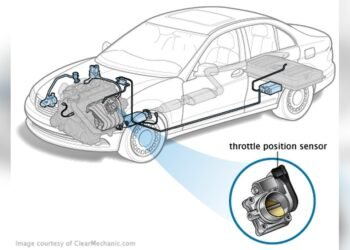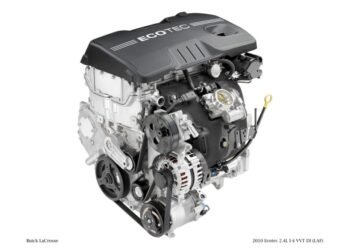Troubleshooting a 2004 Dodge Ram 1500 often starts with identifying common issues like ignition problems or fuel system complications. Owners typically report engine misfires, electrical challenges, or transmission glitches.
Navigating the complexities of a 2004 Dodge Ram 1500 can be daunting for many owners. This rugged truck, known for its durability and power, can still fall prey to a range of problems that impact its performance. Whether it’s a stubborn check engine light or a hesitant start, the key lies in pinpointing the exact issue.
Diagnosing the trouble could involve inspecting the vehicle’s spark plugs, fuel injectors, or even the exhaust system for any signs of wear or failure. Understanding these potential pitfalls not only helps in maintaining optimal functionality but also ensures a smoother and safer driving experience. With the right approach, owners can keep their Dodge Ram running efficiently, minimizing downtime and costly repairs.
Introduction To 2004 Dodge Ram 1500 Troubleshooting
The 2004 Dodge Ram 1500 stands as a rugged symbol of American truck power. Yet, even the sturdiest trucks meet challenges. Troubleshooting these issues early can save time and money. This guide dives into common problems and DIY solutions, aiding Dodge Ram owners in keeping their trucks running smoothly.
Common Issues Faced
- Transmission glitches: Shifting becomes rough or unresponsive.
- Engine problems: Stalls or loses power unexpectedly.
- Electrical faults: Dashboard lights or power windows fail.
- Suspension issues: Ride turns bumpy or uneven.
- Exhaust system troubles: Noise increases or emissions rise.
Benefits Of Diy Fixes
- Saves money: No labor costs from mechanic visits.
- Empowers owners: Learn valuable vehicle maintenance skills.
- Immediate solutions: Fix problems on your schedule.
- Personal satisfaction: Enjoy the success of self-accomplished repairs.
Starting Troubles And Solutions
Starting issues in the 2004 Dodge Ram 1500 can be frustrating. Good news is, common problems have straightforward fixes. This section dives into solutions for starting troubles.
Battery Checks
A weak or dead battery often causes starting problems. Begin by checking the battery’s condition.
- Inspect terminals for corrosion.
- Ensure connections are tight and clean.
- Test the battery voltage with a multimeter.
- If below 12.6 volts, charge or replace the battery.
A fresh, fully charged battery should resolve the issue. If not, the starter motor might be at fault.
Starter Motor Fixes
The starter motor turns the engine over. A faulty starter can prevent the truck from starting.
- Listen for a clicking noise when turning the key.
- If present, the starter might be the culprit.
- Check electrical connections at the starter.
- Ensure they’re secure and intact.
- A non-responsive starter might need replacement.
A professional mechanic should assess the starter motor if these steps don’t help.
Engine Overheating: Causes And Cures
If your 2004 Dodge Ram 1500 is running hot, you’re not alone. Engine overheating can be alarming. It can also lead to serious damage if not addressed quickly. Let’s identify common causes and find effective solutions.
Coolant System Leaks
Leaking coolant is a top cause of overheating. It’s vital to check for signs of leakage. These can include:
- Puddles under the truck
- Low coolant levels in the reservoir
- White smoke from the exhaust pipe
Fix leaks by sealing or replacing affected parts. This keeps the engine cool and functioning.
Radiator Maintenance
A dirty or clogged radiator hampers heat dispersal. To maintain your radiator:
- Inspect the fins for dirt or obstructions.
- Check coolant flow for consistency.
- Perform regular flushes of the radiator fluid.
Clean radiators prevent overheating. They protect your Dodge Ram’s engine.
Electrical Glitches And How To Handle Them
Owners of the 2004 Dodge Ram 1500 may encounter electrical issues. These problems can range from minor annoyances to significant malfunctions. Understanding common glitches helps drivers address them effectively. This section focuses on troubleshooting electrical glitches with practical solutions.
Fuses And Relays
Check fuses and relays first when electrical components fail. They are the guardians of the electrical system. A blown fuse often signals a deeper issue. Always replace fuses with the correct amperage to prevent damage. Relays, like fuses, are crucial for proper operation. They manage the flow of current to heavy-duty components. If a relay fails, the component it controls will stop working. Here’s a quick guide:
- Locate the fuse box under the hood or dashboard.
- Consult the owner’s manual for the right location.
- Inspect the fuse or relay visually for damage.
- Use a fuse tester or multimeter to check for continuity.
- Replace any faulty fuses or relays immediately.
Wiring Harness Inspections
Damaged wiring can cause erratic electrical behavior. Inspect the wiring harness regularly for signs of wear. Look for frayed wires, corrosion, or loose connections. These can lead to shorts or disconnects in the electrical system. Here are steps to inspect your wiring harness:
- Turn off the engine and disconnect the battery.
- Remove any protective covering or panels.
- Examine the wires closely for damage.
- Look for discoloration, which indicates overheating.
- Test each wire with a multimeter for continuity.
- Secure all connections and replace damaged wires.
Maintain your 2004 Dodge Ram 1500’s electrical system with these tips. Regular checks ensure a smooth ride and prevent major issues.
Transmission Issues Simplified
Understanding transmission problems in your 2004 Dodge Ram 1500 is key to a smooth drive. Simple checks and fixes can save you time and money. This section covers common transmission troubles and how to address them.
Fluid Level And Quality
Transmission fluid keeps gears shifting smoothly. Low or dirty fluid causes issues. Regular checks prevent damage. Use the dipstick to check fluid level. The fluid should be pink or red. Dark or burnt-smelling fluid needs a change.
- Check the fluid level when the engine is warm.
- Locate the dipstick near the transmission.
- Wipe it clean, reinsert, then pull out to check the level.
- Ensure fluid is clear with a sweet smell.
A table for fluid check intervals:
| Interval | Check Type |
|---|---|
| Monthly | Fluid Level |
| Annually | Fluid Quality |
Shift Solenoid Replacement
Shift solenoids control fluid flow in automatic transmissions. Faulty solenoids cause gear shifting problems. Replacement restores performance.
- Diagnose with a scan tool.
- Locate solenoids inside the transmission pan.
- Remove the pan and replace faulty solenoids.
- Refill with fresh transmission fluid.
Remember to check the specific codes related to solenoid issues. A professional mechanic can replace solenoids quickly. Regular maintenance keeps your 2004 Dodge Ram 1500 running smoothly.
Suspension Problems And Fixes
The 2004 Dodge Ram 1500 delivers rugged performance, but suspension issues can arise. A smooth ride relies on a healthy suspension system. Proper diagnosis and repair ensure durability and comfort. Let’s explore common suspension problems and their fixes.
Shock Absorber Checks
Shock absorbers are crucial for a stable ride. They control the impact and rebound movement of your truck’s springs and suspension. Worn shocks lead to a bouncy ride and reduced control. Here’s how to check them:
- Lift the truck safely.
- Inspect shocks for leaks and damage.
- Press down on the bumper.
- Watch for multiple bounces.
If the truck bounces more than once, shocks might need replacement. A mechanic can confirm this.
Strut Replacement
The Ram 1500’s struts are key for suspension integrity. They support the vehicle’s weight and absorb road shock. Signs of strut problems include uneven tire wear and noise over bumps. Replacing struts can restore ride quality. Here are the steps:
- Secure the truck on jack stands.
- Remove the wheel.
- Take off the old strut.
- Install the new strut.
- Reattach the wheel.
Professional installation is best. It ensures safety and alignment accuracy.
Regular maintenance prevents suspension issues. Address problems early for a smooth, safe drive.
Braking System: Common Faults And Fixes
The braking system is a critical safety feature in any vehicle, especially in a robust truck like the 2004 Dodge Ram 1500. Knowing common faults and their fixes can save lives and reduce repair costs. Let’s explore the typical issues and solutions related to the braking system of this truck model.
Brake Pad Inspection
Brake pads are vital for safe stopping. Worn pads can lead to brake failure. Regular checks are a must.
Here’s how to inspect them:
- Remove the wheel to access the brake assembly.
- Check pad thickness. Replace if below 1/4 inch.
- Look for uneven wear. It indicates caliper issues.
Brake Fluid Leaks
Brake fluid is essential for transferring force. Leaks can cause brake failure.
To fix leaks:
- Check for wet spots under the vehicle.
- Inspect brake lines and hoses for damage.
- Replace faulty components immediately.
Maintaining the braking system in your 2004 Dodge Ram 1500 ensures safety and reliability. Address issues promptly for optimal performance.

Credit: www.dieseldoctor.ca
Fuel System Troubleshooting
Dodge Ram 1500 owners often face fuel system issues. Regular maintenance can prevent these problems. This guide covers key fuel system troubleshooting for the 2004 Dodge Ram 1500.
Fuel Filter Replacement
A clogged fuel filter can cause engine troubles.
Replacing it restores fuel flow and engine performance.
- Locate the fuel filter near the tank.
- Release fuel pressure before removal.
- Remove old filter and install a new one.
Fuel Pump Diagnostics
Signs of a failing pump include sputtering and power loss.
Testing the fuel pump ensures it delivers proper pressure.
- Listen for the pump’s hum at key on.
- Check fuel pressure with a gauge.
- Replace the pump if pressure is low.
Conclusion: Maintaining Your Dodge Ram 1500
Maintaining your 2004 Dodge Ram 1500 is crucial. A well-maintained truck runs better and lasts longer. This section will guide you through keeping your Dodge Ram 1500 in top shape.
Regular Maintenance Schedule
Follow a regular maintenance schedule to keep your truck running smoothly. This includes:
- Oil changes every 3,000 to 5,000 miles
- Checking tire pressure monthly
- Replacing air filters every 12,000 miles
- Brake checks at every oil change
- Inspecting coolant levels seasonally
When To Seek Professional Help
Sometimes, professional help is needed. Look for these signs:
| Sign | Action |
|---|---|
| Unusual noises | Visit a mechanic |
| Engine light on | Get a diagnostic test |
| Fluid leaks | Check immediately |
| Smoke from exhaust | Inspect for issues |
Remember, regular checks and maintenance can prevent big problems. Keep your Dodge Ram 1500 running smoothly for years to come.

Credit: circuitboardmedics.com

Credit: m.youtube.com
Frequently Asked Questions
How Do I Reset My Dodge Ram 1500 Computer?
To reset your Dodge Ram 1500 computer, turn the ignition key to “ON” without starting the engine. Wait for 10 seconds. Then, turn it off. Repeat this process three times. This should reset the computer system.
What Causes Ram 1500 To Go Into Limp Mode?
A Ram 1500 may enter limp mode due to transmission issues, sensor failures, or engine problems. Faulty wiring or low fluid levels can also trigger this safety feature.
How To Reset Tcm Dodge Ram 1500?
To reset the TCM on a Dodge Ram 1500, disconnect the battery for 30 minutes. Reconnect the battery, which will reboot the truck’s computer systems, including the Transmission Control Module.
What Would Cause A Dodge Ram 1500 Not To Start?
Several factors could prevent a Dodge Ram 1500 from starting. Common causes include a dead battery, faulty ignition switch, failed starter motor, fuel system issues, or a defective alternator. Regular maintenance helps identify and fix these problems early.
Why Does My 2004 Dodge Ram 1500 Stall?
Engine stalling in a 2004 Dodge Ram 1500 often results from issues with the fuel system or a faulty idle air control valve.
Conclusion
Troubleshooting your 2004 Dodge Ram 1500 doesn’t have to be daunting. We’ve covered key fixes for common issues, from engine stutters to electrical quirks. Armed with this knowledge, you can approach repairs confidently. Remember, regular maintenance is your best defense against future problems.
Keep your Dodge Ram running smoothly with these tips.















